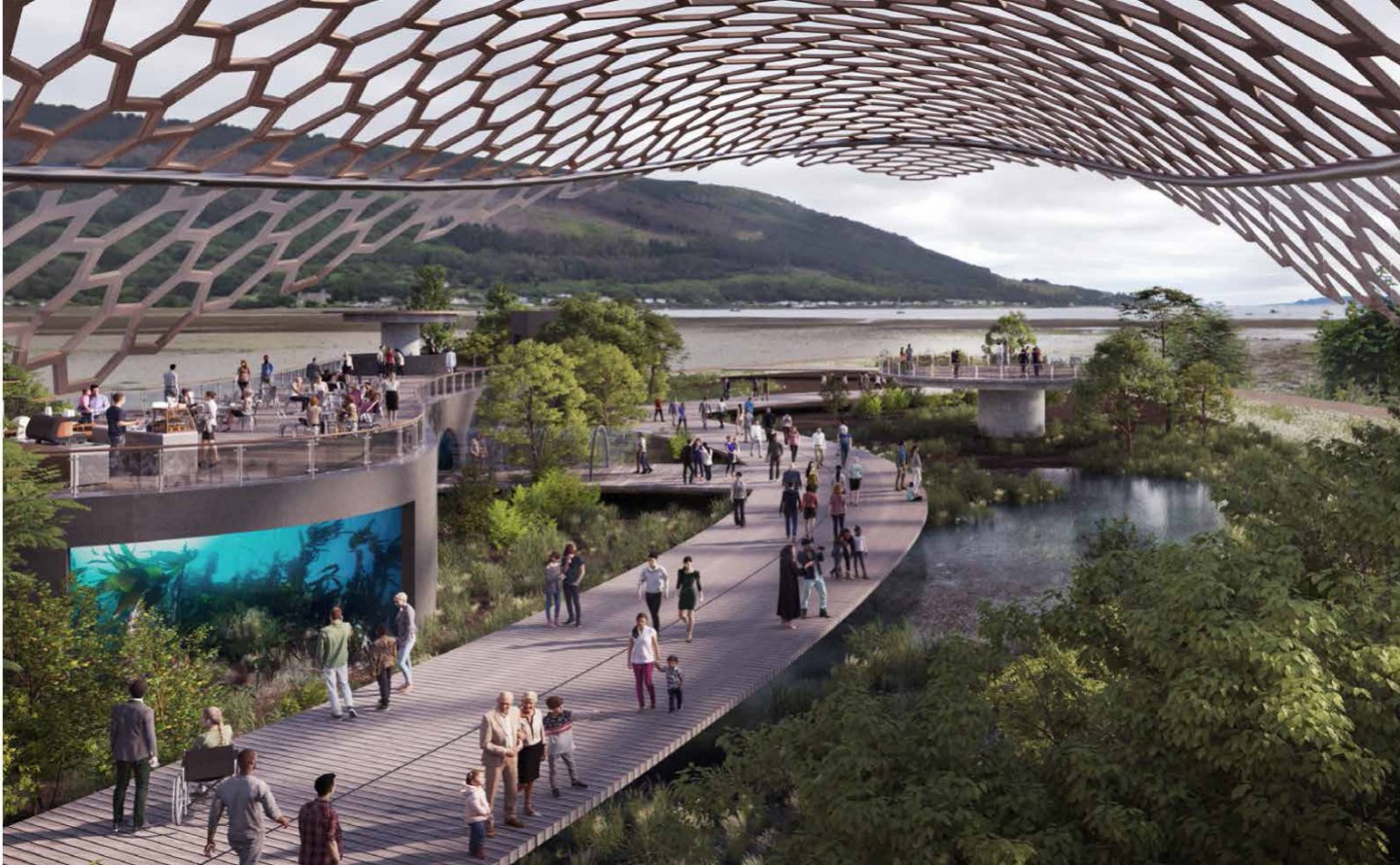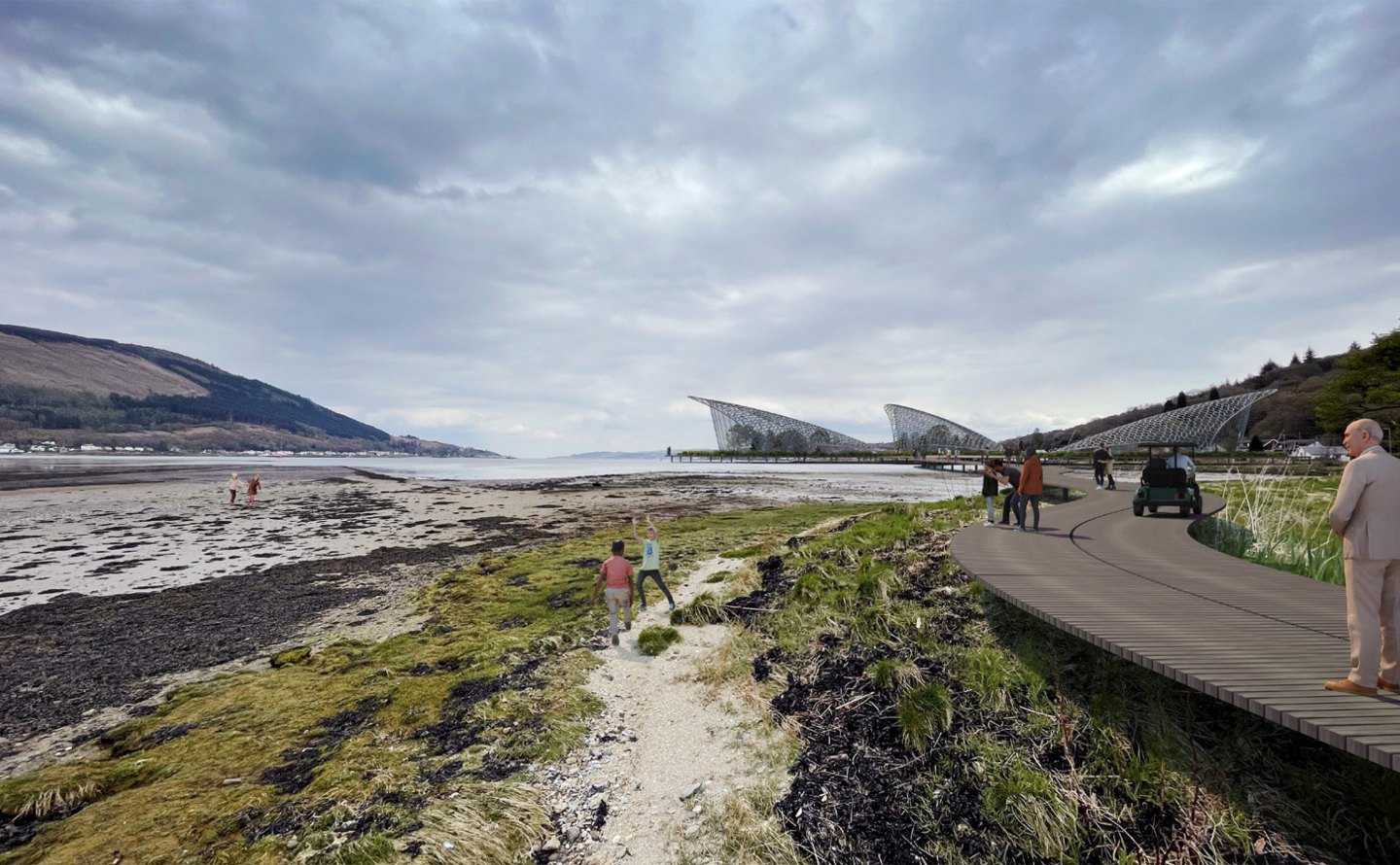
An ambitious environmentally friendly project in Sandbank which could create hundreds of jobs and boost the local economy by millions will hold it's first ever public consultation meeting next week in Dunoon.
The Holy Loch Project, which proposes to install a long boardwalk on stilts around the head of the loch with scope for the construction of not one, but three leaf shaped buildings in the future, will boost jobs, the economy and mark the Holy Loch as a visitor destination.
The entire aim of the project is to celebrate the natural environment in and around the Holy Loch and to use this to create an exemplary ecological and immersive visitor and educational attraction.
The man behind this enterprising development is internationally renowned architect John McAslan, who was educated at Dunoon Grammar School, a registered charity which he established in 1997, called the John McAslan Family Trust, acquired the Burgh Hall in Dunoon and restored the building, creating a new community-focused centre for contemporary arts.
John has a reputation for careful restoration and redevelopment of historic buildings in the UK and overseas, including iconic London landmarks such as the Roundhouse and London's King's Cross station. Next week at the Burgh Hall he will be holding the project's first ever public consultation event where local residents are invited to pop along and view the conceptual art for the development and learn more about the project's aims and ambitions.
John explained: "I began developing conceptual ideas for the Holy Loch Project during Covid as a way of celebrating the natural environment in and around the loch, whilst reversing the negative ecological impacts of the former US Navy base which was stationed there. I felt it was a great location as we all know Dunoon and Sandbank sit on the gateway to the Highlands and the area has so much rich maritime history."
He added: "I had a conversation with the guys who run the Eden Project in Cornwall and it got me thinking could a project of similar ambition work in the Holy Loch given it's extraordinary history and location, which would provide both a visitor experience, economic regeneration and restorative work on both land and sea."
The project aims to celebrate not only the Holy Loch's natural environment but also its rich historical, industrial and military heritage and the fact that its a route to the western highlands are all factors which help demonstrate the potential business case for the project.
John explained: "The proposition is designed to be phaseable, beginning with no more than a timber boardwalk on stilts, but has the potential to develop, in time, to a three 'petal' attraction designed to the highest environmental standards. We now need to develop a feasibility study and we have an idea of the costs needed to we're currently exploring funding options but starting with the stilted timber boardwalk is the first phase."
He added: "This is a ten year project but when fully developed we envisage the it would attract up to 750k visitors per annum, create revenues of £25M per annum, create some 350 new jobs and would be positively transformational for the region potentially boosting the GVA by £500M."
If you are interested in the Holy Loch Project's aims and ambitions then you can view the conceptual art for the development and meet John directly at the Burgh Hall at 5pm on Wednesday. October 18 where he will be delivering a presentation of the project along with promotions for his new book 'Making Architecture'.
